Page 1 of 1
In Cephei
Posted: Mon Dec 21, 2015 9:58 am
by JP Nougayrede
Hello,
Playing around Cephei with an Alpy 600 on a T200.
Clear skies !
Jean-Philippe
Bonjour, juste pour jouer avec l'alpy 600 sur un Newton 200. Bon ciel !
Alderamin
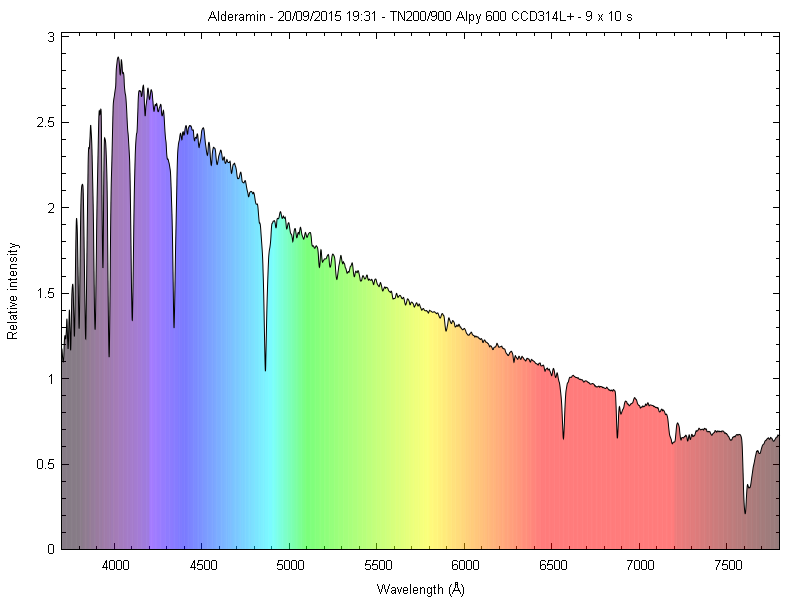
Mu Cep, supergiant, Wiliam Hershel's garnet star
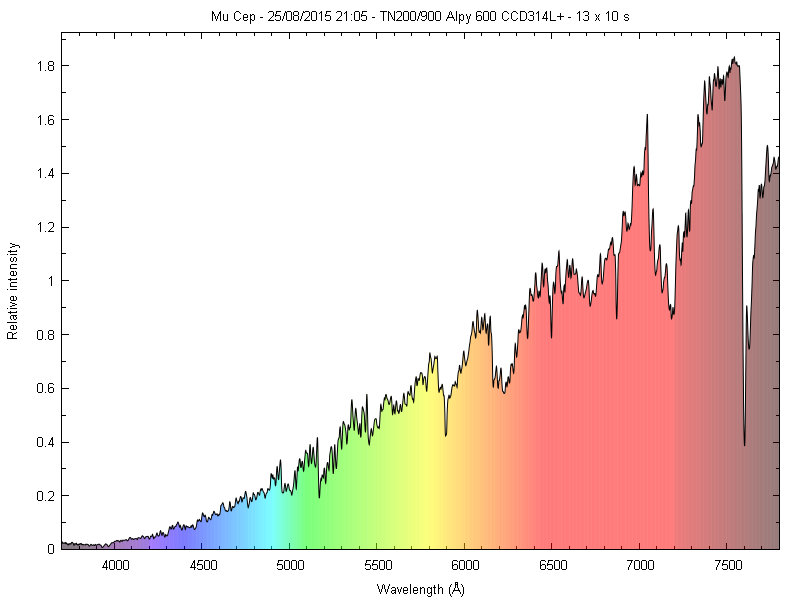
Delta Cep, classic pulsating star, varying between F5 and G3
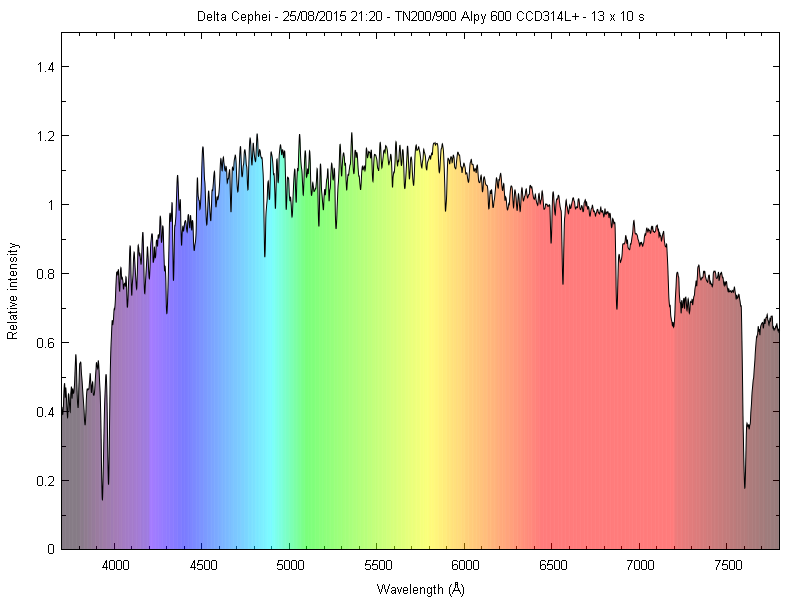
Delta Cep is a binary, its companion HD213307 is a B type
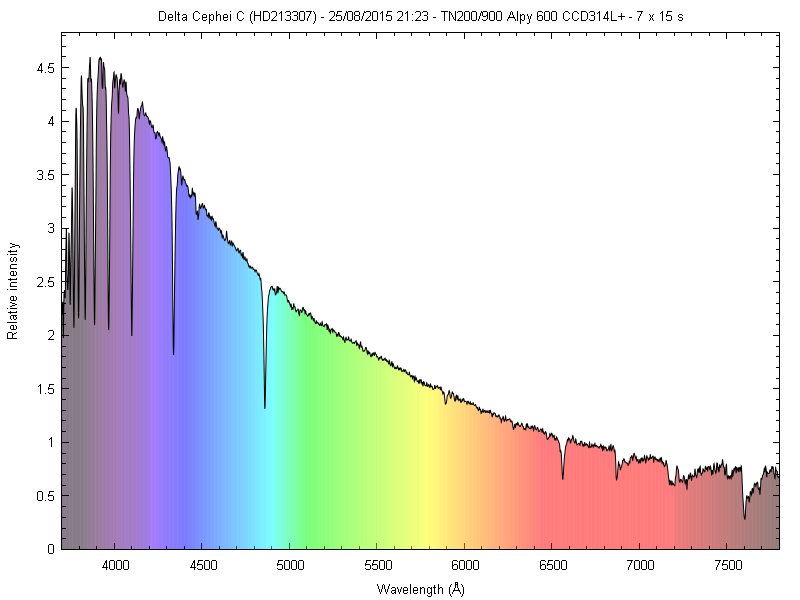
Alfirk (Beta Cep). A giant, type B1, pulsating variable
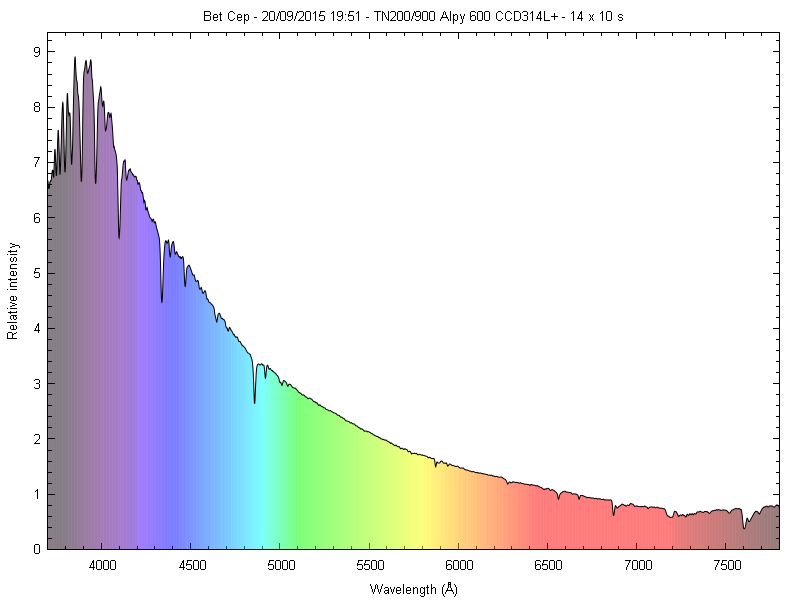
And the amazing symbiotic supergiant VV Cep
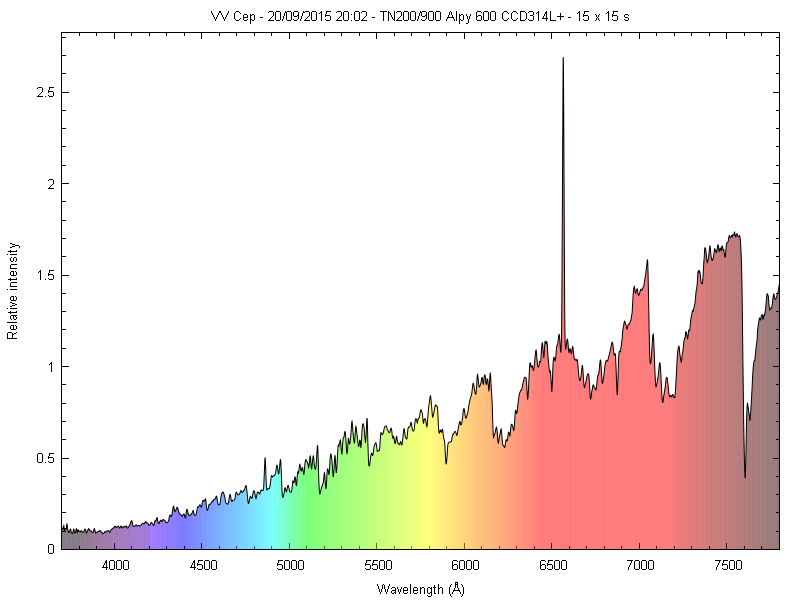
Re: In Cephei
Posted: Mon Jan 04, 2016 6:35 pm
by Paolo Berardi
Hi Jean-Philippe, your series of spectra is very nice, congratulations!
Delta cep is an interesting target, changes in a cycle involving both continuum and strenght of certain lines. You can check the ephemeris and take two spectra at minimum and maximum of luminosity so that a comparison can be made.
VV Cep is a binary star system and the spectrum you captured is related to the red supergiant and its hot blue companion light (mixed). The red supergiant light is similar to that of mu Cep you caught the spectrum. So you could try to subtract the profile of mu Cep from VV Cep one to recognize the spectrum of the hot companion (and accrection region around it). May be required some small trasformations before the subtraction (rescaling, offset). This is just for fun, I think it isn't an easy task if we are to achieve an accurate result.
You can find more information about VV Cep on the dedicated section:
http://www.spectro-aras.com/forum/viewforum.php?f=19
Note the forthcoming VV Cep observation campaign 2017/2019.
Clear skies!
Paolo
Re: In Cephei
Posted: Fri Jan 08, 2016 9:57 pm
by JP Nougayrede
Thanks Paolo.
Playing with a crude subtraction VV cep - Mu Cep :
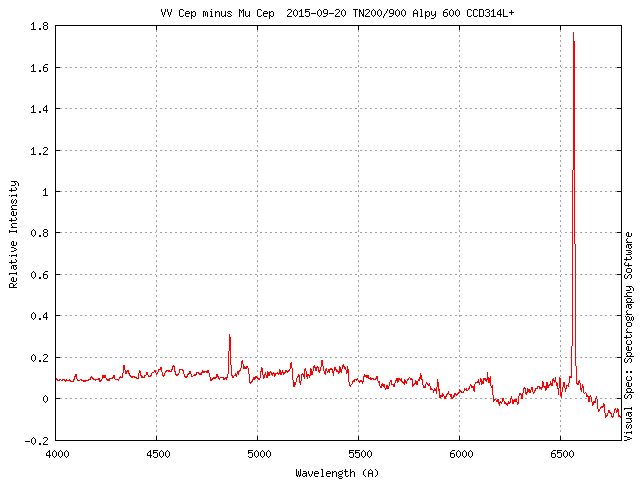
...hints at some kind of bluer component plus Ha&Hb emission lines (=accretion disk) ?
Re: In Cephei
Posted: Sun Jan 10, 2016 7:26 pm
by Paolo Berardi
Very nice Jean-Philippe! Yes, the hydrogen lines form in the accrection disk/shell. High resolution spectra show a double peaked profile, typical of a rotating disk, due to the Doppler shift. The hydrogen emission lines disappear when the M-type giant star passes in front of the hot companion hiding it and entire shell (primary eclipse phase).
See details:
http://adsabs.harvard.edu/abs/2015SASS...34...83H
Paolo
Re: In Cephei
Posted: Mon Jan 18, 2016 8:38 pm
by JP Nougayrede
Thanks Paolo for the paper












